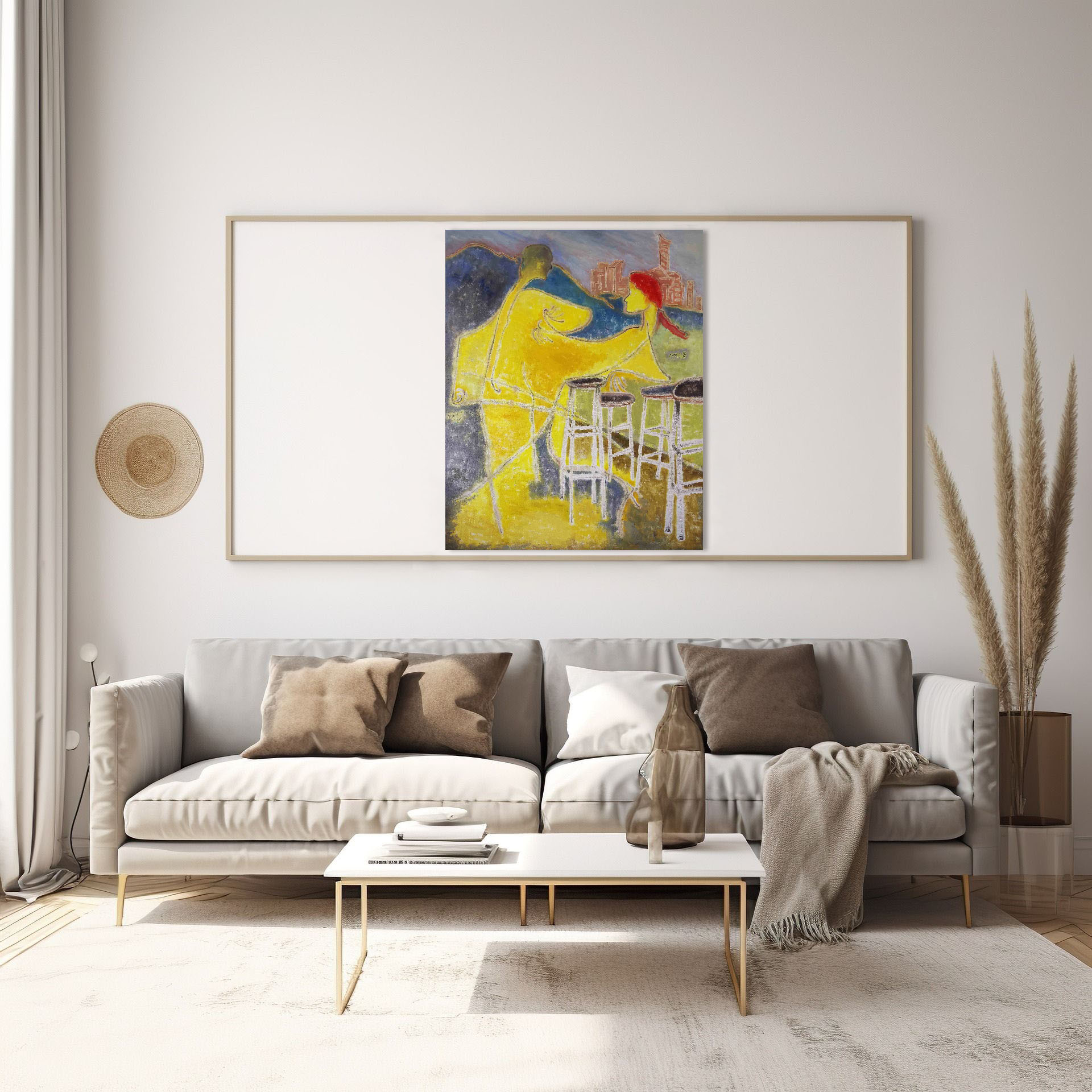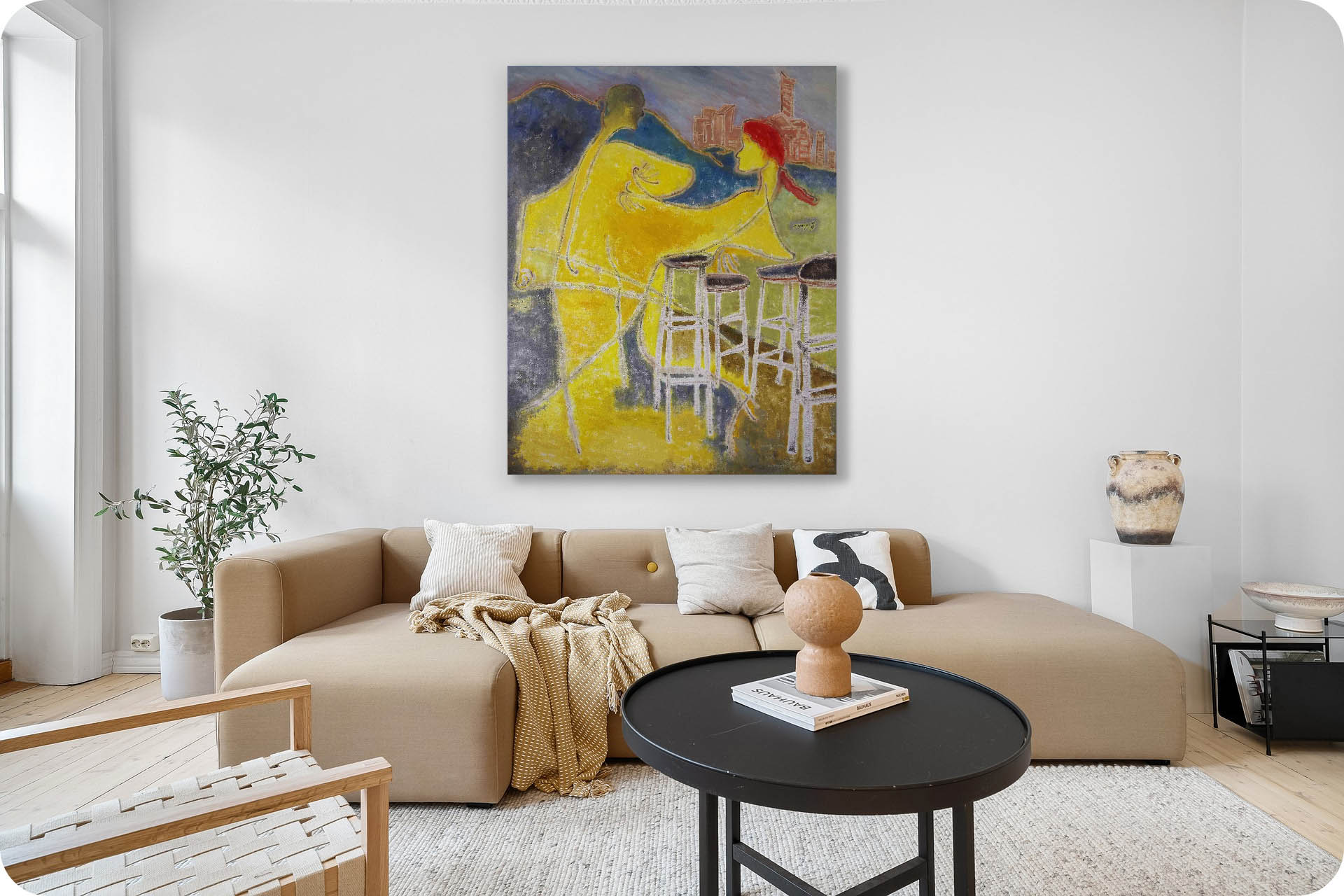This painting was created in 2020, the year I just graduated from college and was in a period of transition. The subject matter and style of painting continued from my college days.
It's a pity.
Inches: 47.2 x 59 in
Size without the frame: 120 cm x 150 cm
Country: China
Date: 2020
Materials: Oil paint on linen
Condition: well preserved
Creative themes and style | My works revolve around the creative concept of "The land of humanity, People on the land". The people in the painting are people in nature, and the lines, shapes, and colors are close to nature. The nature in the painting is nature in the eyes of humans, existing in interaction with humans.I don’t pursue a series of works with a fixed and continuous style. I hope that the style of the pictures will synchronize with the changes in my life and always remain oscillating. The performance of the work must be in sync with the development of one's own life in order to be Sincere and powerful. Ideas are later.
An Interview with Artist Philo by Artphiloso Gallery
If you would like to collect this artwork or know more about the artist, please contact us.
framed canvas print,self-portrait with cropped hair,oil painting landscape,realism in art.


In this painting, yellow is more than a bright background—it acts as an atmospheric projection. It envelops the dancer’s body and movement, casting a soft yet bittersweet glow. The diffusion of yellow creates the sensation of time being suspended, as if the dance were interrupted, while still leaving behind warmth and lingering rhythm.
The figure is not rendered with full solidity but instead abstracted into fluid lines and color blocks. This approach places the dancer between presence and dissolution. The viewer can sense the rhythm of movement, yet the blurred contours suggest that dance is unfinished, where memory and emotion become the true subject of the painting.
The distant urban skyline functions as a counterpoint, symbolizing rational order and the coolness of modern city life, set against the foreground’s free, emotional dance. This juxtaposition elevates the work beyond a simple dance theme, embedding a social metaphor that highlights the tension between individual emotion and urban environment.
With its core palette of yellow, blue, and red, the piece radiates both warmth and a touch of melancholy. It is ideal for modern living spaces, art-themed cafés, or dance studios. In public venues it can spark conversation, while in private interiors it serves as a catalyst for reflection and emotion, making it highly adaptable to different settings.
This work belongs to the genre of contemporary figurative-abstraction, using simplified lines and colors to transform dance’s dynamic energy—and its sense of incompletion—into a compelling visual narrative. Its uniqueness lies in recording the subtle relationship between urban life and individual states of mind. For collectors, it carries long-term value as a potential representative work of contemporary emotional expression in the art market.
What should I pay attention to when buying an artwork or its derivatives?
A: Click here to view ARTPHILOSO's Guide for Collectors.
More paintings from this series:
